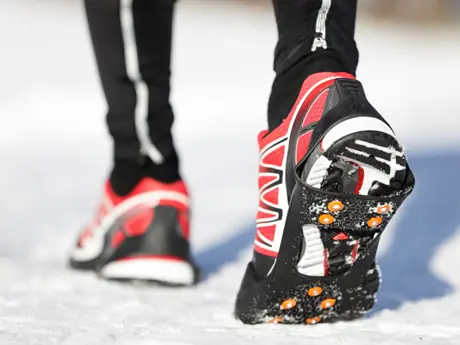
Ryan Carter knows a thing or two about running in the cold. He is a running coach and ultramarathoner who lives in Minneapolis. When those harsh Minnesota winters hit, he doesn't hibernate. He goes outside and runs.
Ask him what's the coldest temperature he's ever run outside in, and he laughs.
"Maybe 15 below, 20 below," Carter says. "You have to want to go running. It's generally the stubborn that are out there doing that, the purists and the people who have something to prove."
Running outside when it's 20 degrees below zero sounds extreme. But running in the cold isn't considered dangerous if you take the right precautions.
More: 9 Training Tips to Run Through Winter
Stephen Pribut, a sports medicine doctor and avid runner in Washington, D.C., has run with temperatures hovering around zero degrees Fahrenheit. He has written about running in the cold and, while he acknowledges its dangers to the unprepared, insists that it can be a safe form of exercise.
"If you dress warm enough, it's safe within the continental U.S., for sure," Pribut says. "People have managed to run marathons in the Arctic Circle and in Antarctica."
Here are four things to keep in mind as you head outside for a cold-weather run.
More: 5 Minimalist Winter Running Tips
Clothing
Knowing what to wear can be a tricky. After the first mile or so of your run, your body will warm up, and you might be uncomfortable because you have too much on.
"In more moderate temperatures, you can dress about 15 to 20 degrees warmer than it is outside," Pribut says.
When Carter goes on his brutal Minneapolis winter runs, he makes sure to wear breathable clothing and wears it in layers.
"And when it gets really cold," Carter says, "you really want to be careful about exposed skin. You have to be careful about the face and the lips."
More: How to Layer This Winter
For moderately cold days—say, temperatures around freezing—Pribut says runners have to make sure that the head, the hands and the feet are covered. The head is where up to 25 percent of a person's body heat can escape. The hands and feet are the most vulnerable to frostbite. On extreme cold days, the nose is susceptible to frostbite, too. Headgear like a balaclava can be helpful.
Overall, though, err on the side of too many layers and adjust as you start running in the cold more. You'll quickly get used to how your body feels at certain temperatures.
- 1
- of
- 2
About the Author

Get ACTIVE on the Go


Couch to 5K®
The best way to get new runners off the couch and across the finish line of their first 5K.
Available for iOS | Android






Discuss This Article